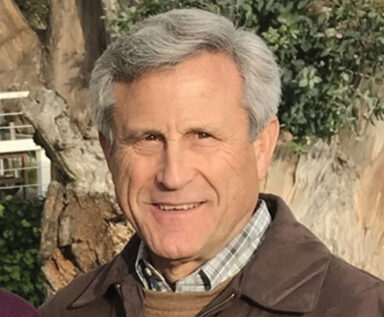Infant Botulism: A Physician’s Perspective
- By Trudie Mitschang
 AS THE chief of the Infant Botulism Treatment and Prevention Program (IBTPP) for the California Department of Public Health (CDPH), Steve Arnon, MD, MPH, dedicated 45 years of his career to diagnosing, researching and treating infant botulism, and was credited with saving thousands of lives in California and around the world.
AS THE chief of the Infant Botulism Treatment and Prevention Program (IBTPP) for the California Department of Public Health (CDPH), Steve Arnon, MD, MPH, dedicated 45 years of his career to diagnosing, researching and treating infant botulism, and was credited with saving thousands of lives in California and around the world.
Dr. Arnon’s interest in infant botulism was sparked in 1976 when he received a call about a paralyzed infant from Salinas, Calif. Through epidemiological and laboratory investigation, he and colleagues collected evidence that the baby’s digestive tract was colonized with Clostridium botulinum, the bacterium that produces an exceptionally potent neurotoxin. As additional infants in California were diagnosed with acute weakness throughout that year, Dr. Arnon and his medical team named the condition infant botulism (in contrast to botulism that results from contaminated food or wounds).
After founding the IBTPP, Dr. Arnon characterized the distinct pathophysiology, epidemiology, clinical features and risk factors of infant botulism (see “Diagnosing and Treating Infant Botulism”). This eventually led to the discovery that honey can contain spores of C. botulinum, and that exposure to honey is a risk factor for some cases of infant botulism. His efforts to alert the public to avoid feeding honey to infants were joined internationally by pediatric and public health authorities, eventually resulting in voluntary warning labels on commercial honey in the United States.
His paper titled “The Creation and Development of the Public Service Orphan Drug Human Botulism Immune Globulin,” described Dr. Arnon’s journey of bringing what is now the go-to treatment for infant botulism to market. Following the passage of the federal Orphan Drug Act of 1983, he received funding from the U.S. Food and Drug Administration (FDA) Office of Orphan Products Development to conduct pivotal clinical trials of human botulism immune globulin intravenous (BIG-IV) in California. This was followed by a six-year nationwide open-label study of BIG-IV from 1997-2003, culminating in FDA licensure of BIG-IV as BabyBIG on Oct. 23, 2003. The first and only licensed human botulism immune globulin, BabyBIG is the standard of care for infant botulism and shortens hospital stays by an average of three and a half weeks. Before the development of BIG-IV, the treatment of patients with infant botulism consisted only of meticulous nutritional and respiratory supportive care.2
As the longest-standing member of the collaborative Interagency Botulism Research Coordinating Committee, Dr. Arnon has more than 75 peer-reviewed publications to his credit, including textbook chapters about infant botulism, many of which originally helped to describe the disease. He also co-authored the article “Global Occurrence of Infant Botulism, 1976–2006,” published by the American Academy of Pediatrics, which offers a comprehensive overview of the disease’s worldwide incidence.3 The data documenting the safety and efficacy of BIG-IV were eventually summarized in the Journal of Pediatrics.4
Dr. Arnon’s work has been highly recognized over the years; he was the recipient of the 1998 FDA Wiley Medal and Commissioner’s Special Citation “for commitment and determination to test botulism immune globulin antitoxin for treatment of the life-threatening disease of infant botulism.” In 2004, he received the National Organization for Rare Disorders’ Therapeutic Achievement Award, and in 2011, he received the CDPH Recognition Lifetime Achievement Award.
Although Dr. Arnon passed away in 2022 at the age of 75, his legacy lives on. In a statement on the IBTPP website, the organization says: “His passion for teaching and mentoring was evident to all who knew him, and he poured his heart and life into the IBTPP. He left an indelible mark on science, medicine, public health, CDPH and infant botulism patients and their families worldwide.”
To learn more about the California Department of Public Health’s Infant Botulism Treatment and Prevention Program, visit www.infantbotulism.org.
References
- World Health Organization: Botulism. Accessed at www.who.int/news-room/fact-sheets/detail/botulism.
- Arnon, SS. The Creation and Development of the Public Service Orphan Drug Human Botulism Immune Globulin. Pediatrics, Volume 119, Number 4, April 2007. Accessed at www.infantbotulism.org/readings/Peds_Creatn_Devlpmt_BIG_IV_apr07.pdf.
- Koepke, R, Sobel, J, and Arnon. Global Occurrence of Infant Botulism, 1976–2006. Pediatrics, Volume 122, Issue 1, July 2008. Accessed at publications.aap.org/pediatrics/article-abstract/122/1/e72/72970/Global-Occurrence-of-Infant-Botulism-1976-2006.
- Payne, JR, Khouri, JM, Jewell, NP, and Arnon, SS. Efficacy of Human Botulism Immune Globulin for the Treatment of Infant Botulism: The First 12 Years Post Licensure. The Journal of Pediatrics, 2018;193:172-7. Accessed at infantbotulism.org/readings/Payne_2018_Efficacy%20of%20BIG-IV%2012%20years%20post-licensure.pdf.
